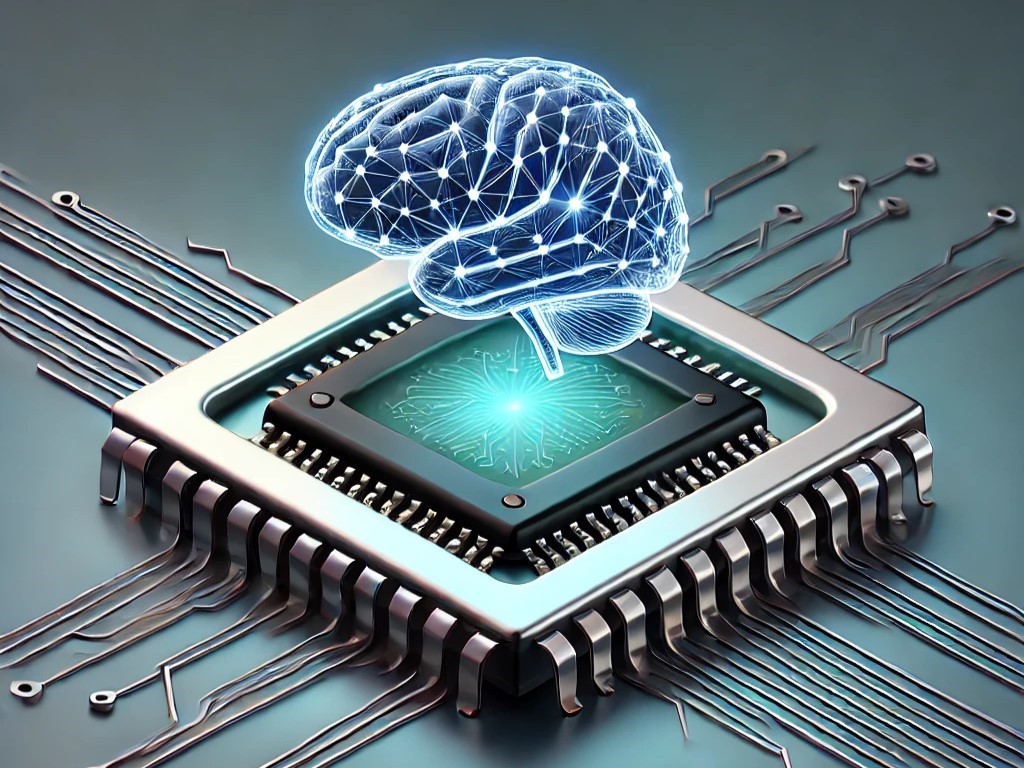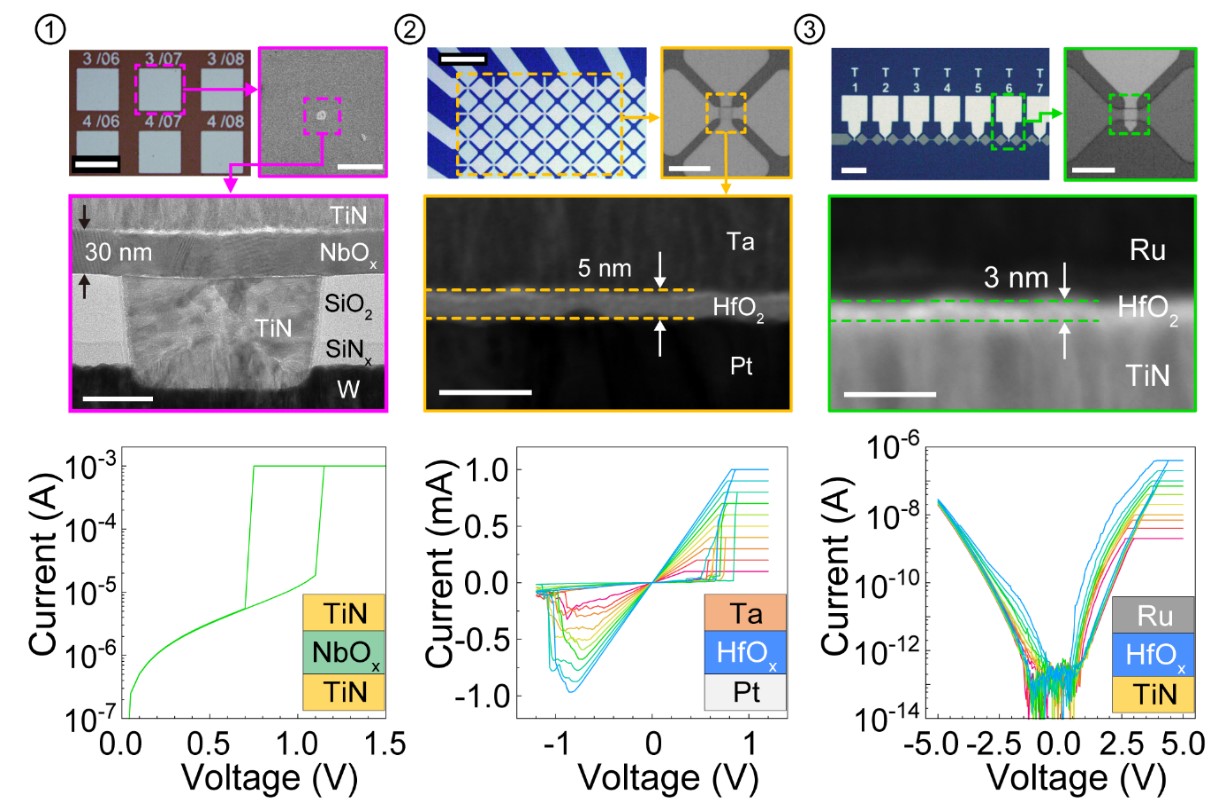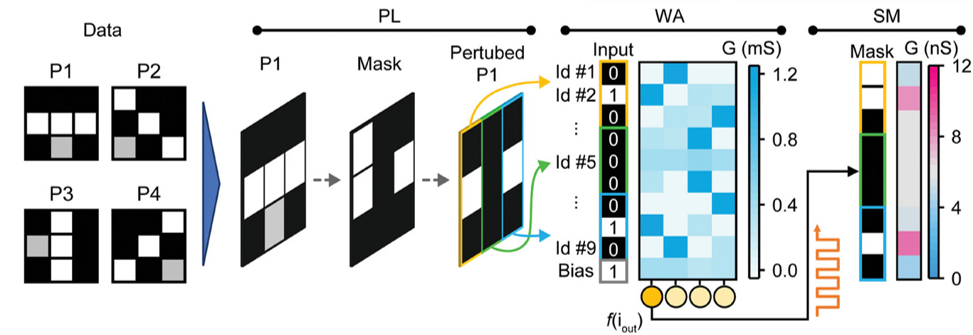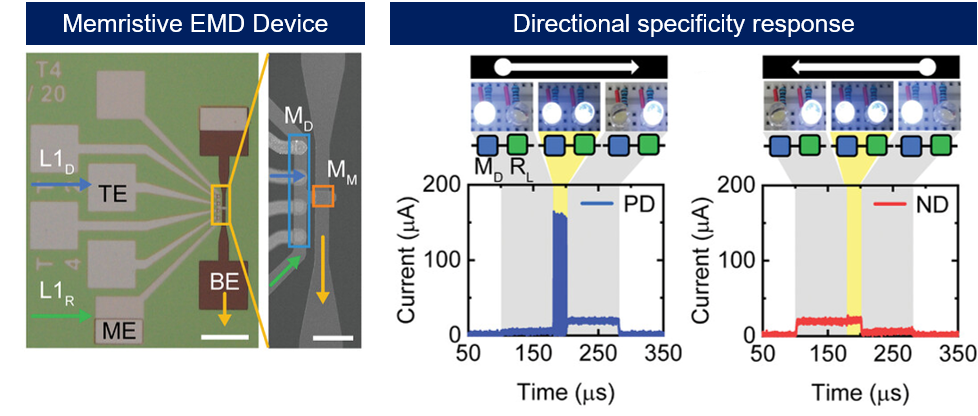KAIST
BREAKTHROUGHS
Research Webzine of the KAIST College of Engineering since 2014
Fall 2025 Vol. 25Evolution of neuromorphic semiconductors enabled by a combination of functional memristors
Memristors are semiconductor devices that can directly implement the characteristics of synapses and neurons, enabling the simple realization of energy-efficient neuromorphic semiconductors. KAIST researchers have developed ultra-low-power neuromorphic hardware for explainable AI (XAI) and an insect-inspired neuromorphic motion detection device by combining various functional memristor devices, thereby achieving energy-efficient computing.

Neuromorphic semiconductors are an innovative computing technology transcending the limitations of the traditional Von Neumann architecture. In conventional systems, data processing and storage occur separately, but neuromorphic semiconductors mimic the neural networks of the human brain to process and store information simultaneously. This technology addresses the data bottleneck issue inherent in systems based on the Von Neumann architecture, enabling more efficient data processing and significantly enhancing computing performance capabilities.
Professor Kyungmin Kim's research team from the Department of Materials Science and Engineering at KAIST has recently achieved two significant breakthroughs in this field: they developed ultra-low-power hardware for explainable AI (XAI) and semiconductor devices capable of detecting object movements, such as those by insects.
Firstly, the team succeeded in developing ultra-low-power hardware technology for explainable AI (XAI) using various memristor devices. As AI becomes more integrated into everyday life, understanding the basis of AI decisions has become crucial. However, the complexity of AI systems often makes them opaque, making it difficult to understand their decision-making processes. XAI addresses this issue by making AI decisions interpretable.
Another breakthrough by the team is the development of an intelligent motion detection device that mimics the visual intelligence of insects to detect object movements. Traditional vision systems require substantial data traffic and high power consumption, making them unsuitable for mobile or IoT devices. In contrast, insects efficiently process visual information through simple neural circuits.
These achievements by Professor Kyungmin Kim's team demonstrate the potential of neuromorphic semiconductor technology to surpass the Von Neumann architecture and significantly enhance the efficiency of AI systems. This technology is expected to bring revolutionary changes to various fields, including mobile devices, autonomous vehicles, and robotics.






Most Popular

A New solution enabling soft growing robots to perform a variety of tasks in confined spaces
Read more
Development of a compact high-resolution spectrometer using a double-layer disordered metasurface
Read more
Towards a more reliable evaluation system than humans - BiGGen-Bench
Read more
AI-Designed carbon nanolattice: Feather-light, steel-strong
Read more
Dual‑Mode neuransistor for on‑chip liquid‑state computing
Read more